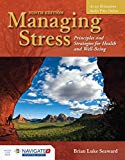Highlighted titles from the newest additions to the HSL Collection. A full list of new titles can be found online.
Pediatric environmental health, by Council on Environmental Health, American Academy of Pediatrics
“From playground to classroom, at home and across town, environmental hazards are all around us — an unfortunate fact of modern life. And no one is more vulnerable to the adverse health effects these hazards can cause than our children. It’s no wonder that environmental hazards are among parents’ top health concerns for their children. Yet little time is spent training physicians and other caregivers to recognize, prevent, and treat ailments resulting from exposure to harmful substances and environments. This comprehensive guide puts critical children’s health information and answers to parents’ questions at your fingertips. From asbestos to radiation, ultraviolet rays, pesticides, asthma, lead, tobacco, childcare and school environments — plus new chapters on global climate change, plasticizers, developmental disabilities, environmental disasters, and more — current information on an exhaustive range of environmental health issues is included.” — R2 Digital Books |
Online |
Managing stress: principles and strategies for health and well being, by Brian Luke Seaward.
“Managing Stress, Seventh Edition, provides a comprehensive approach to stress management honoring the integration, balance, and harmony of mind, body, spirit, and emotions. The holistic approach taken by internationally acclaimed lecturer and author Brian Luke Seaward gently guides the reader to greater levels of mental, emotional, physical, and spiritual well-being by emphasizing the importance of mind-body-spirit unity. Referred to as the “authority on stress management” by students and professionals, this book gives students the tools needed to identify and manage stress while teaching them how to strive for health and balance.”– Amazon |
WM172 S442m 2018 |
Lippincott’s illustrated Q & A review of neuroscience, by Duane E. Haines, et al.
|
WL18.2 H153L 2011 |
Practical handbook of advanced interventional cardiology, edited by Thach Nguyen, et al.
“Written and edited by today’s most-recognized interventional cardiology thought leaders, this popular guide focuses on key procedures and techniques. Each strategic or tactical move is graded by complexity level and described in a simple, step-by-step approach that includes guidance on how to overcome practical difficulties and navigate particularly challenging clinical scenarios and complications. Clear, practical, step-by-step guidance on the latest procedures and techniques, performing challenging interventions, and managing complications and other difficult situations where evidence may be limited or inconsistent.”– R2 Digital Books |
Online |
Lippincott’s illustrated Q & A review of anatomy and embryology, by H. Wayne Lambert, et al.
“Lippincott’s Illustrated Q&A Review of Anatomy and Embryology offers up-to-date, clinically relevant board-style questions—perfect for course review and board prep. Approximately 400 multiple-choice questions with detailed answer explanations cover frequently tested topics in anatomy and embryology, including clinical topics addressed in Moore, Clinically Oriented Anatomy and Sadler, Langman’s Medical Embryology. Readers will find USMLE-style clinical vignette questions as well as content review questions. The book is heavily illustrated with anatomical images, clinical images that portray signs and symptoms, and radiological images including ultrasounds, PET scans, MRIs, CT scans, and X-rays.” — Provided by publisher |
QS18.2 L222L 2011 |





